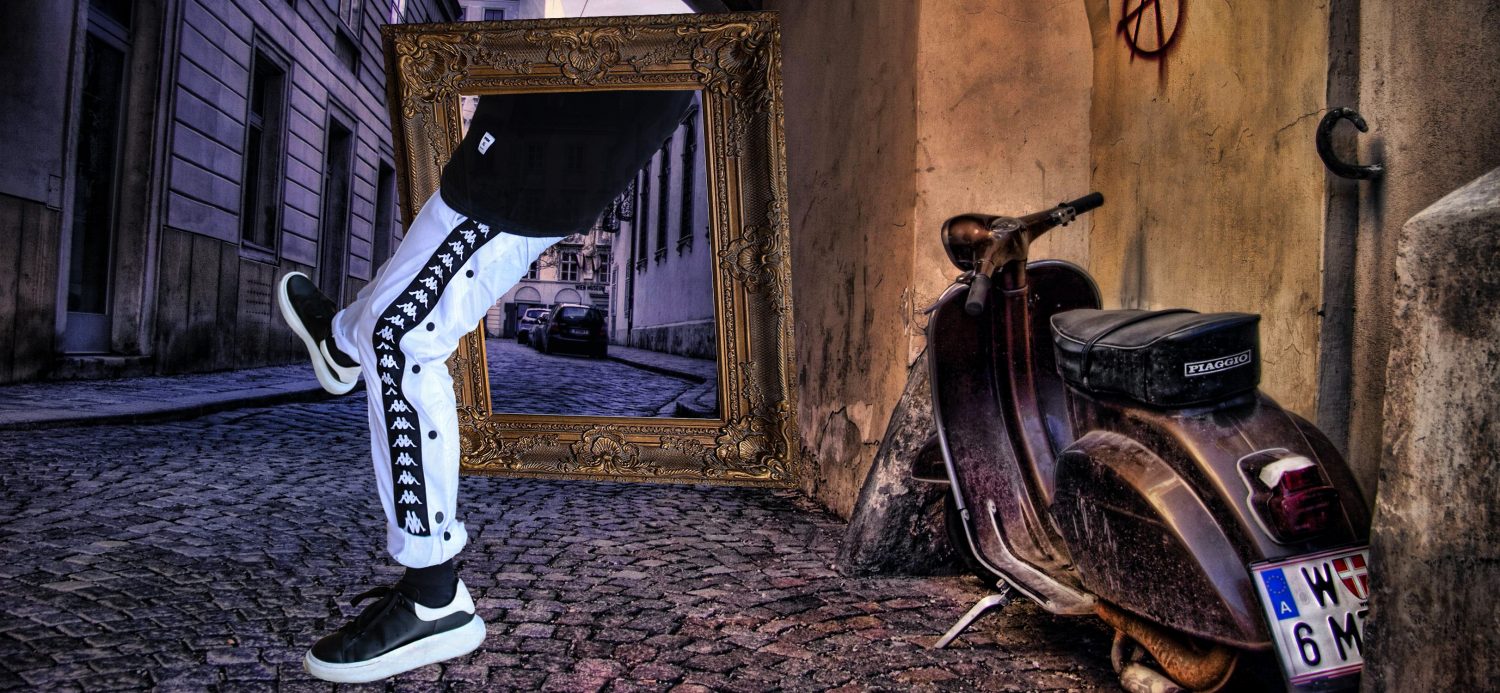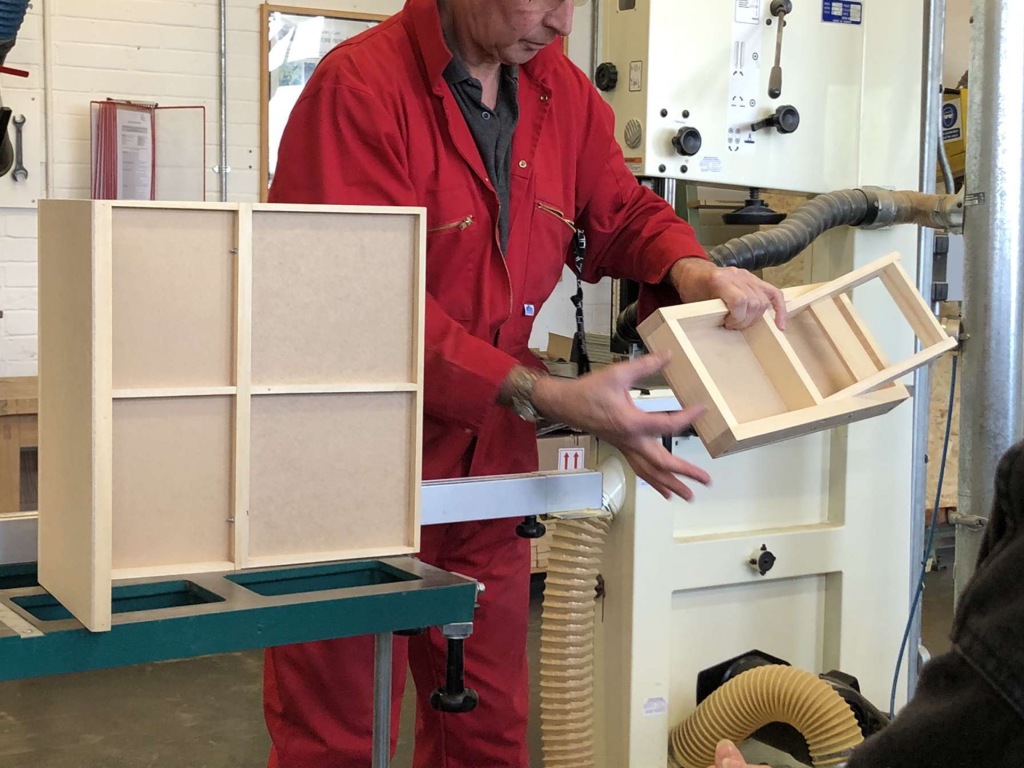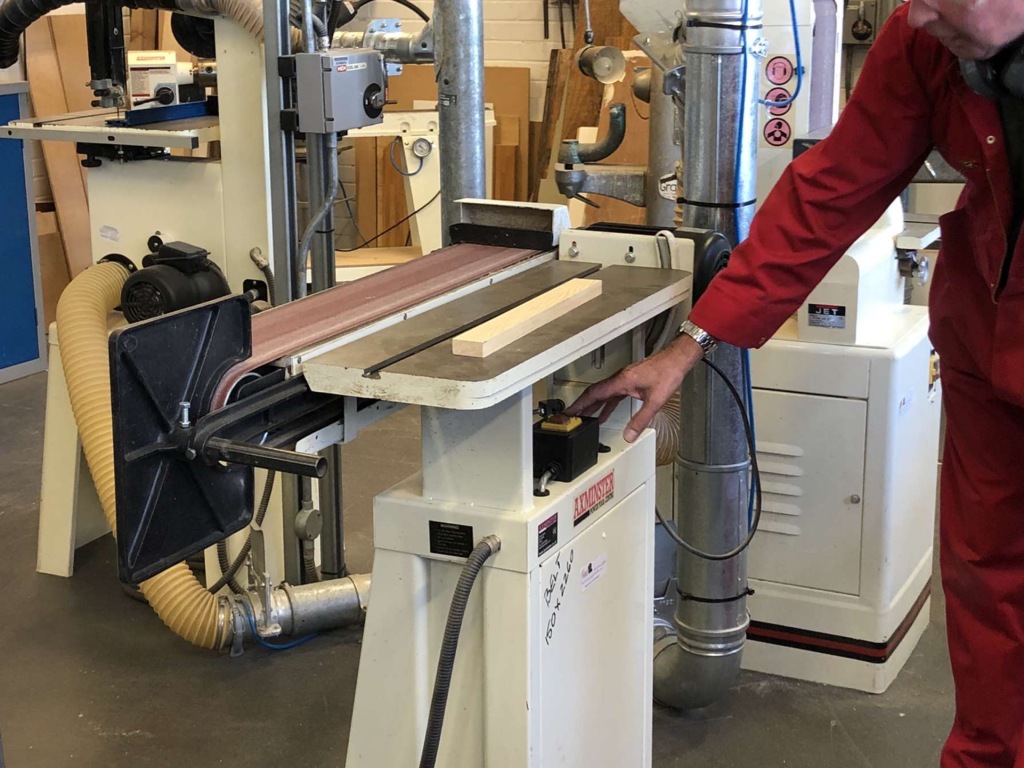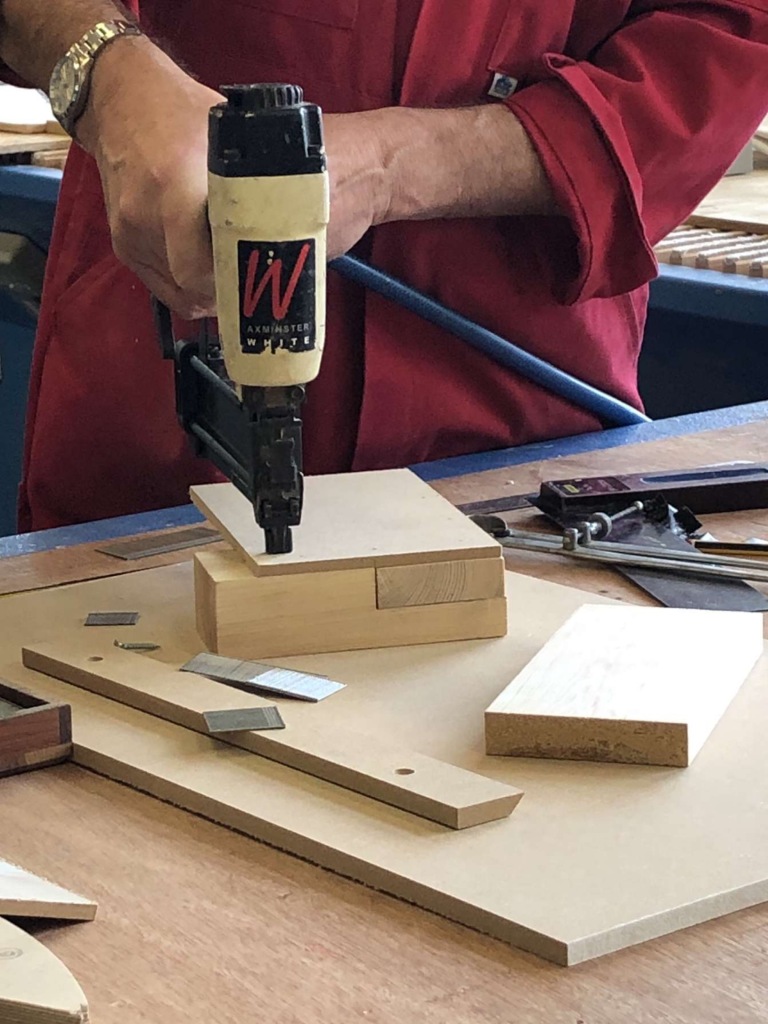In this set design workshop, I learnt a lot of health and safety information while building and installing a set in the studio. Below I will show some photos I have from the workshop; we had an instruction working in the design technology department explaining different ways of building a set. Using the drill, we had to be especially careful as it’s a dangerous tool, we had to have goggles on if there was a high risk and aprons so our clothes wouldn’t get dirty.
Here are the health and satety cautions we learnt about:
Only people that need to be in the studio should be there.
In a studio environment the common major risks are:
Slips, trips and falls caused by people falling over equipment.
Issues concerning the use of electrical equipment.
Identified hazards and actions that can be taken to minimize the risks:
Sharps – The use of scissors and utility knives are often required to cut cable ties, gaffer tape. When these are not in use, they should be stored safely with blade covers on in a place where they will not be accidently knocked.
Suspended equipment – ensure all suspended equipment is securely fastened and where necessary with secondary safety chains to stop items falling e.g. suspended studio lights, heavy backdrops.
Above head height working -Equipment or stored items that requires above head height working or, access to these items to be made by appropriate step ladders, kick-stools or scaffolding as necessary. The access to comply with agreed safe working practices e.g. Step ladders requires someone to hold and stabilise the ladders all the time someone is using the ladders.
Risks of Trips Slips and Falls
Keep the studio clean, clear and un-cluttered. – All the equipment in the studio is to be stored in the correct and safe way when it is not in use. Items to be stored in designated areas around the sides or outside of the studio, no equipment or empty boxes are to be left in walkways or places that people could trip over items.
Make sure all unused equipment is put away before you start your shot to minimise the equipment that could get in the way. Make sure all bags, boxes and equipment trunks are moved to a safe area at the side of the room so there are no trip hazards.
After the shot put all the equipment that needs to be put back away is safely stored.
No food and drink – are to be taken into the studio. This is to prevent food or drink being split destroying or damaging the equipment, giving electric shocks from the wires. Also, food or drink on the floor could be a slip hazard. There is a possibility that photographic chemicals might be in the studio, if so, they could contaminate food and drinks.
Tripods and Light stands – Make sure all of the legs on tripods and light stands are pulled opened to give the greatest stability. This reduces the risk of equipment toppling over on top of someone or damaging the equipment.
Electrical Equipment Risks
Trailing wires and leads – All wires to be taped down or run through rubber cable floor trunking protector. This is to stop people tripping over the wires and hurting themselves. Also, to prevent damage and ware to the cables that will shorten the cables life.
When plugging and unplugging electrical equipment switch of both the equipment and the plug socket before putting the plug in.
Check all the electrical equipment is up to date with PAT testing. A visual check to be carried to ensure there are no exposed wires, damaged leads, plugs are firmly pushed into sockets, no cables are stretched, and the equipment looks to be in good condition and works as designed.
Lamps – Never touch lighting bulbs, even when cold. Incandescent lights work at high temperatures. If handled the finger marks and traces left behind can cause localised hot spots that will cause a bulb to blow, or even explode.




